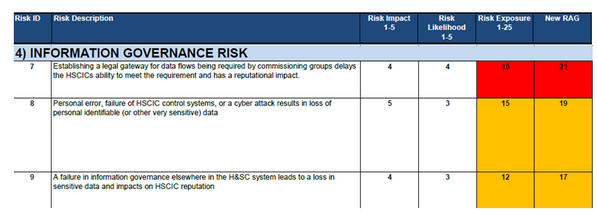The questionnaire was very quick and simple and asked your opinions about care.data, alongside other easy questions like "have you had a leaflet?" The results were posted by HWDevon at http://www.healthwatchdevon.co.uk/healthwatch-devon-report-care-data/
With only limited time and resources, HWDevon garnered 97 responses.
I started to muse that if every HW had done this, then maybe each of the 150 HWs could have got 100 responses, then that would have been 15,000 responses! Wow! NHS England does something, and within a couple of weeks 15,000 people respond back to tell them what they thought about it! Brilliant!
Of course HWDevon will be first to agree their report is flawed. The sample size is low, but even if it wasn't, it's still a self-selected sample. The people responding all care about care.data. And we've no idea really who these people are. Sometimes, the most important response to a question or questionnaire is "I don't know anything about this". It tells the questioner that maybe we're collectively just not that bothered about it.
So, I think I've got an idea, to make it better and fix the flaws...
The HealthWatch Peoples Panel
Who would be invited?
Obviously it's open to all, but routes to populating it quickly are:
- email all people who have already responded to HWDevon online questions
- all HWDevon members
- Name
- Address
- Date of birth
- Occupation
- Employer details.
What would the Panel commit to?
The Panel agree to answer regular questionnaires from HWDevon (or HWEngland). And the agreement is to answer the questions honestly and quickly. And HW make it clear that null responses are just as valid. So, if they want to know about our perception of A+E over the last 6 months then its a perfectly valid and useful response to say "I haven't been to A+E in the last 6 months". Indeed, if this had been in place for the care.data round of questioning in February, we would have had a much better handle on whether the furore in the press was actually reflected by the general public actually giving a monkeys.
And there would be a stick too. Panel members MUST respond to nearly all the questionnaires. Without that we'll miss key denominator information. Therefore, I'd propose that a panel member could be removed, if they fail to take part in, say, three consecutive questionnaires. Remember, these questionnaires would only take two or three minutes to complete so it would not be onerous.
The benefits.
Because we have the demographics and employment data, the HW analysis of the responses will be much clearer. If all the responders are retired people, that's fine, but we then know that and can tailor our overall view of the response accordingly. Likewise if all the responders are NHS employees, then that too would be very useful info.
What next?
Lets try this in Devon for three months. If we can build a panel of 300, wouldn't that be great. And if we can do it, then we can spread it throughout HWEngland. 300 x 150 = 45,000 people... can you imagine. Ask a question and a week later 45,000 responses...
